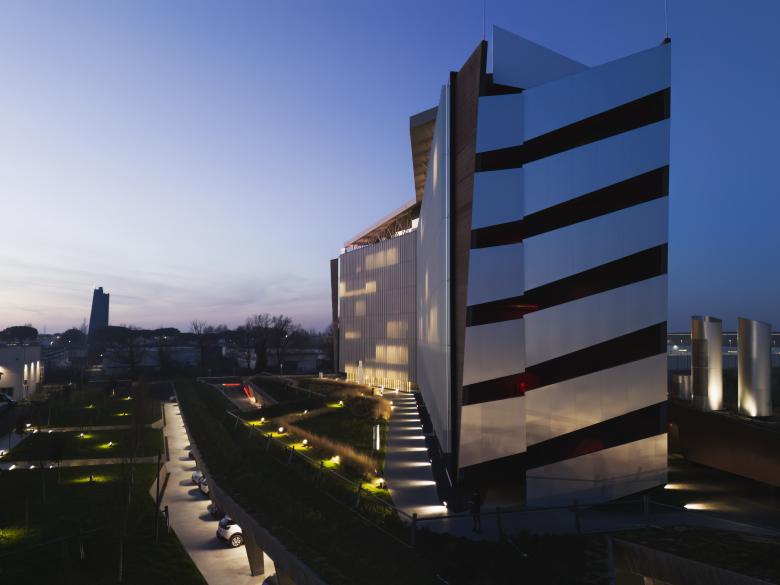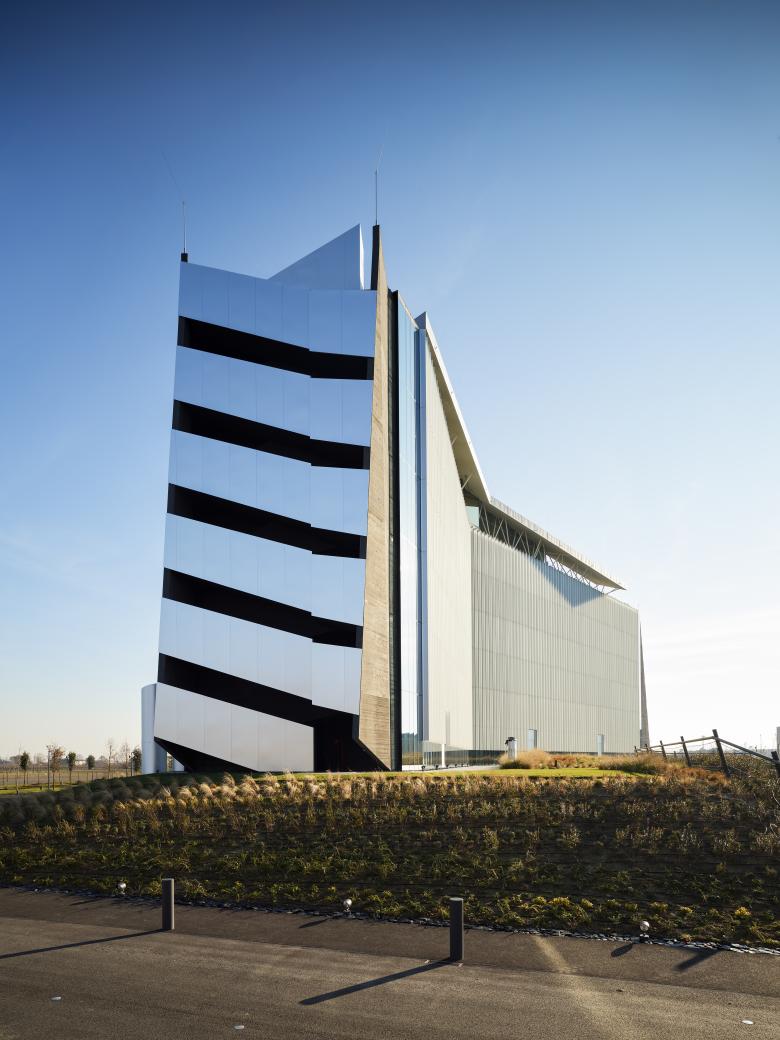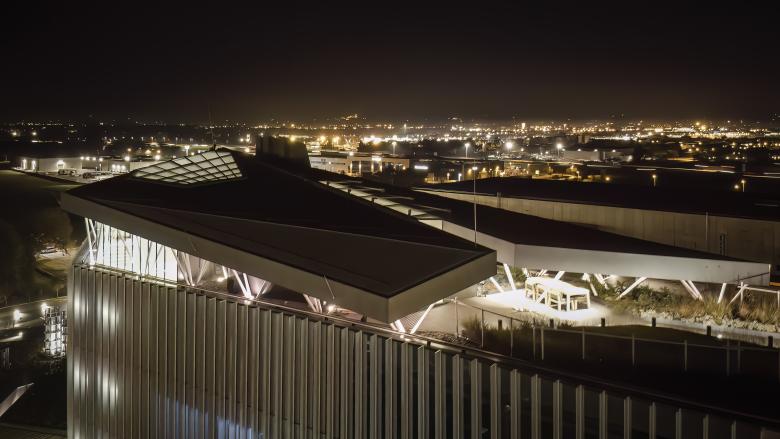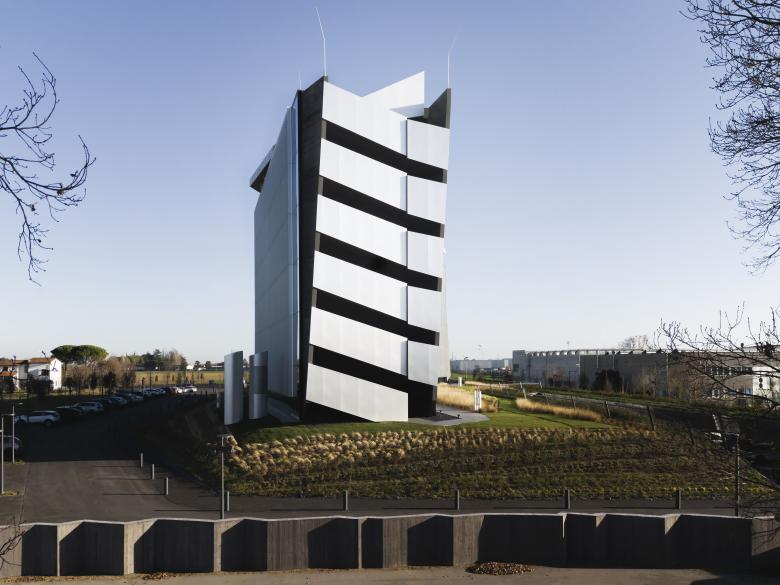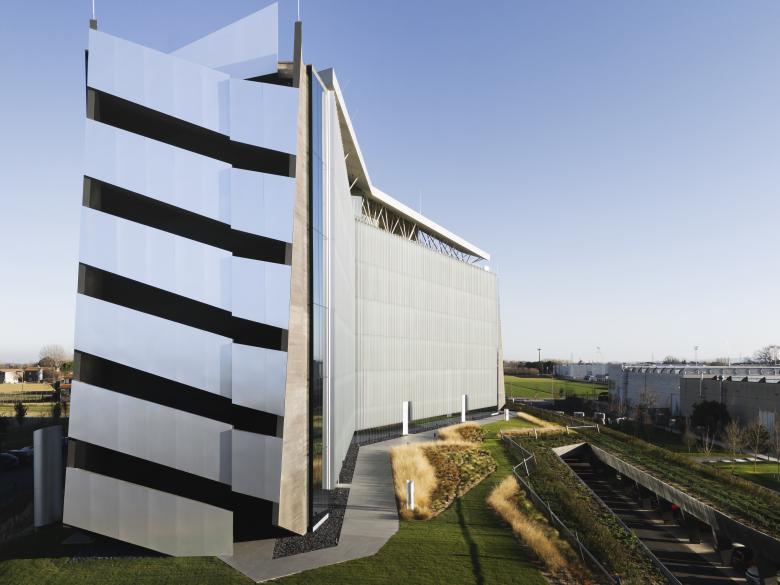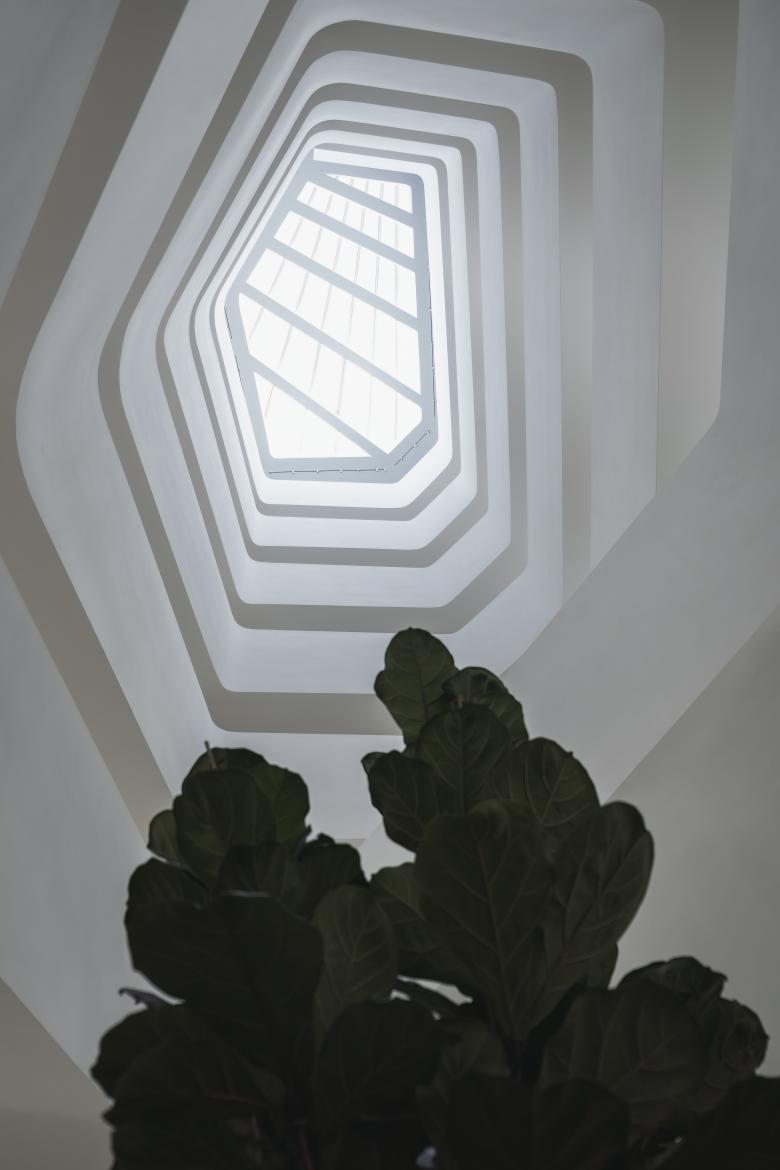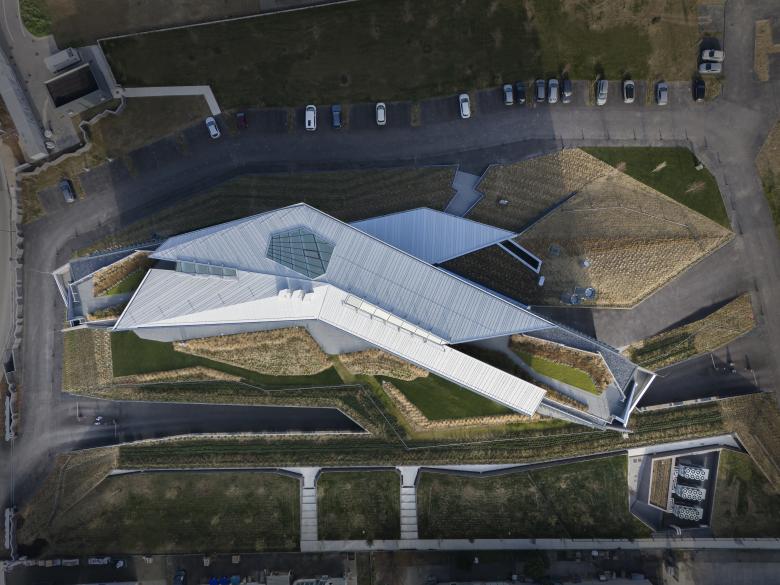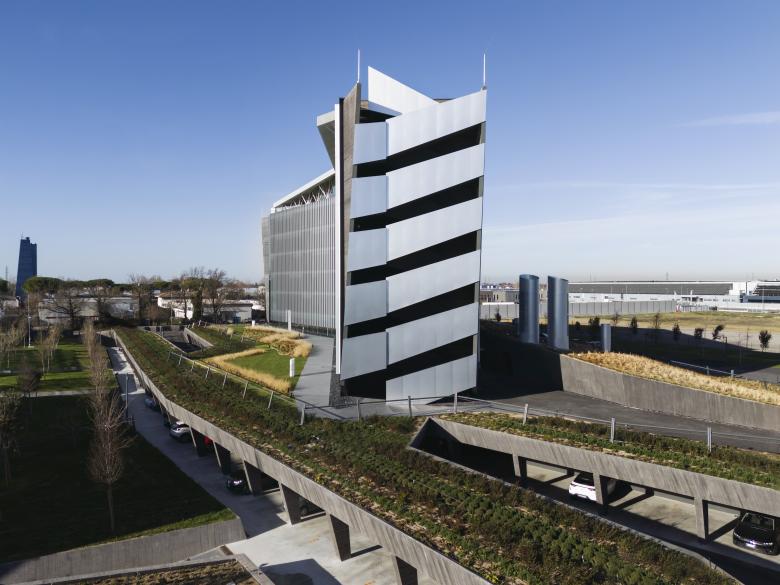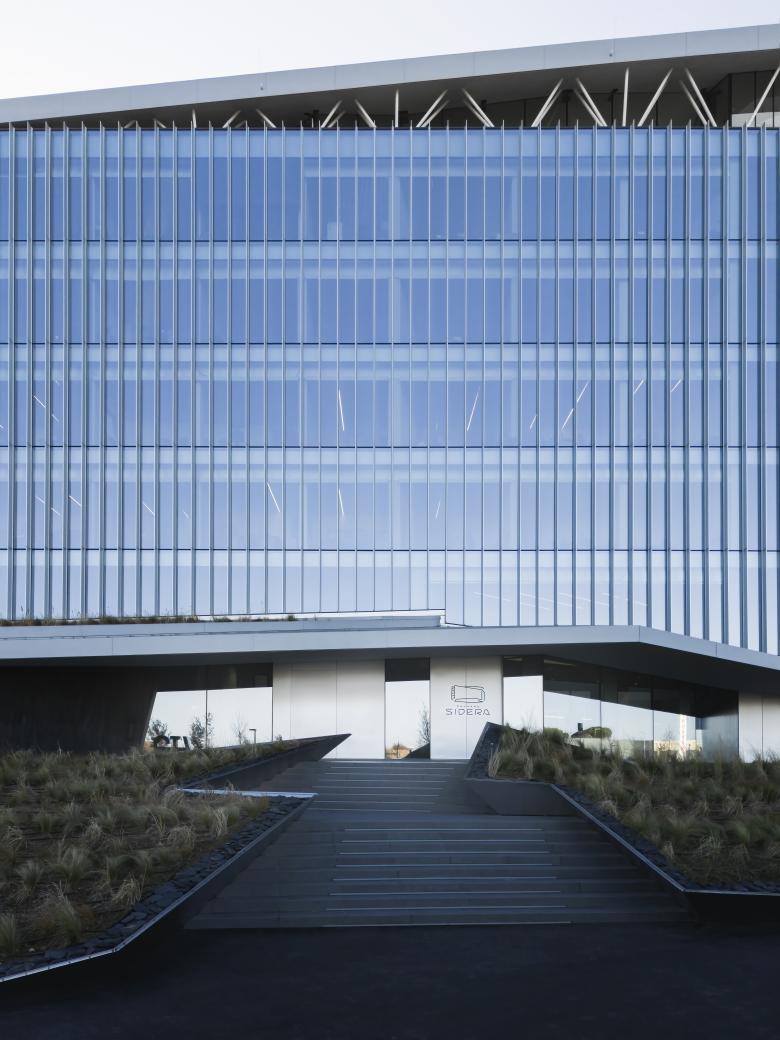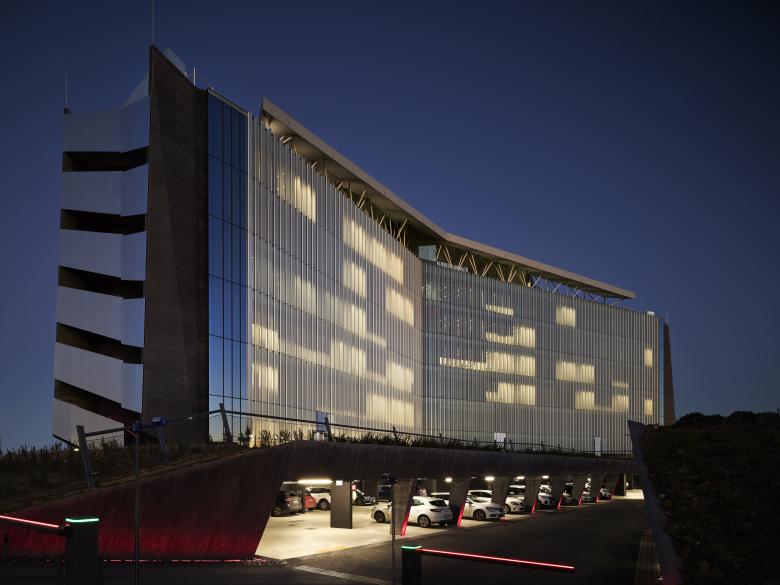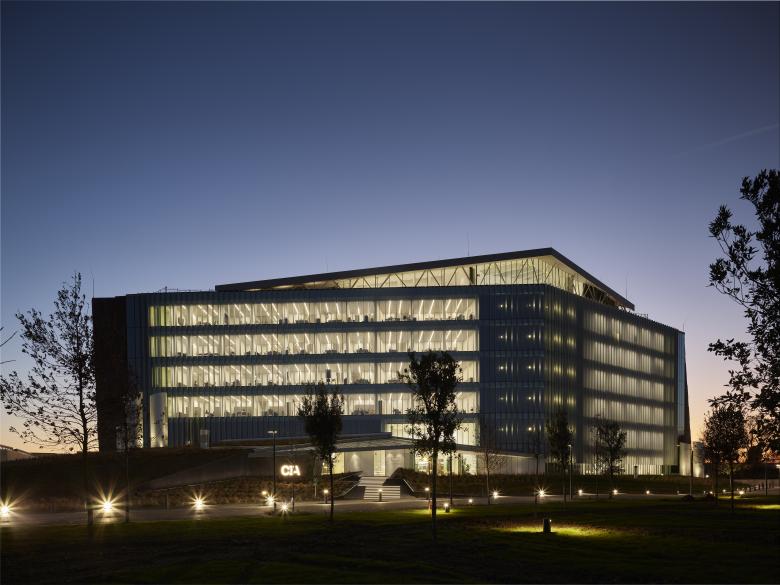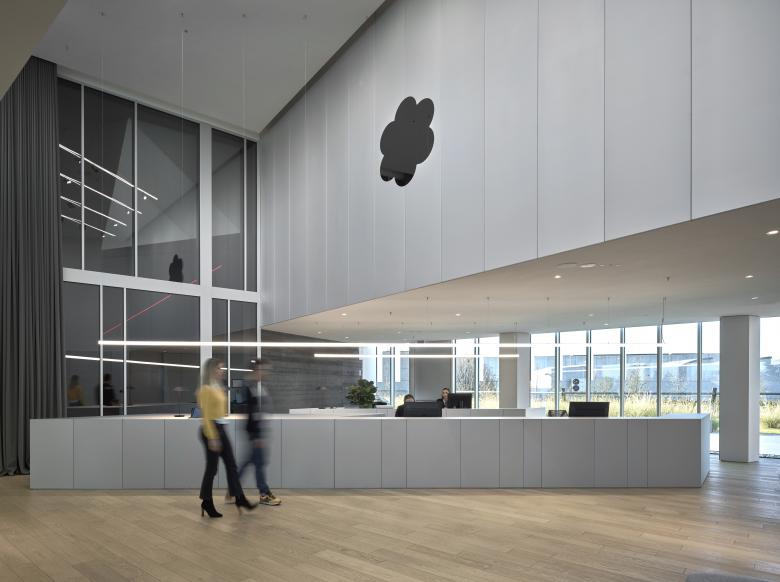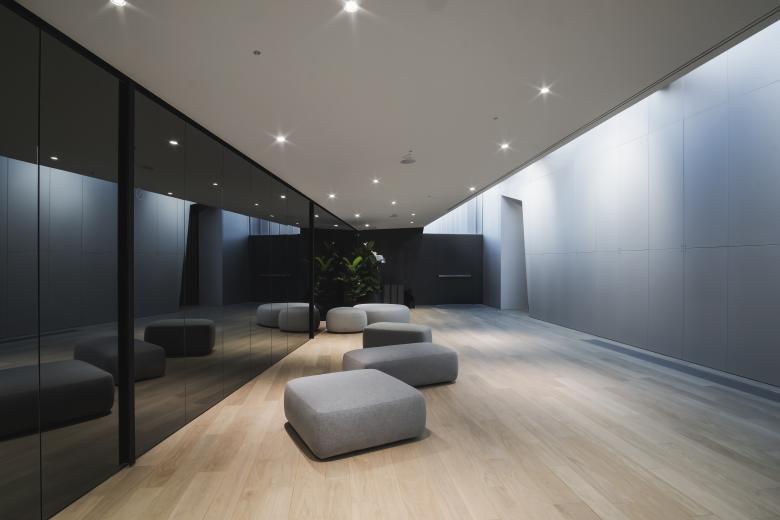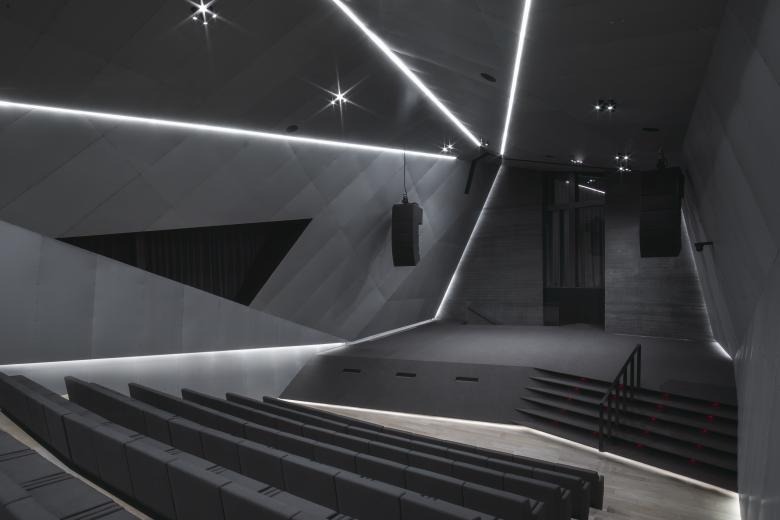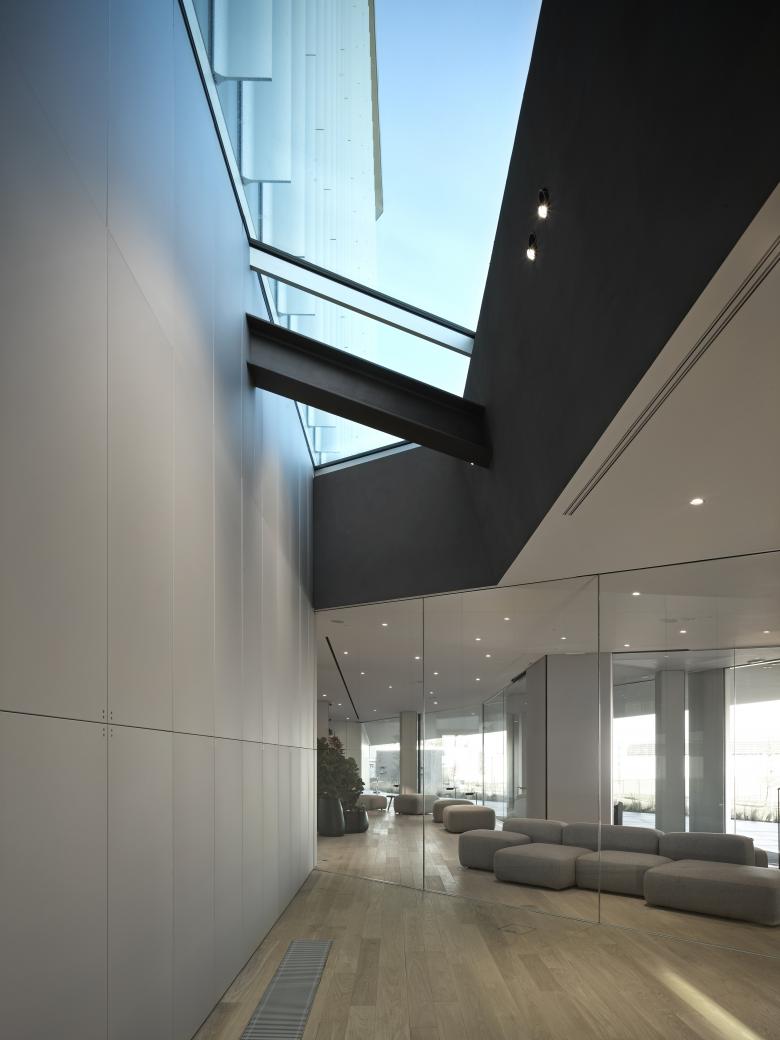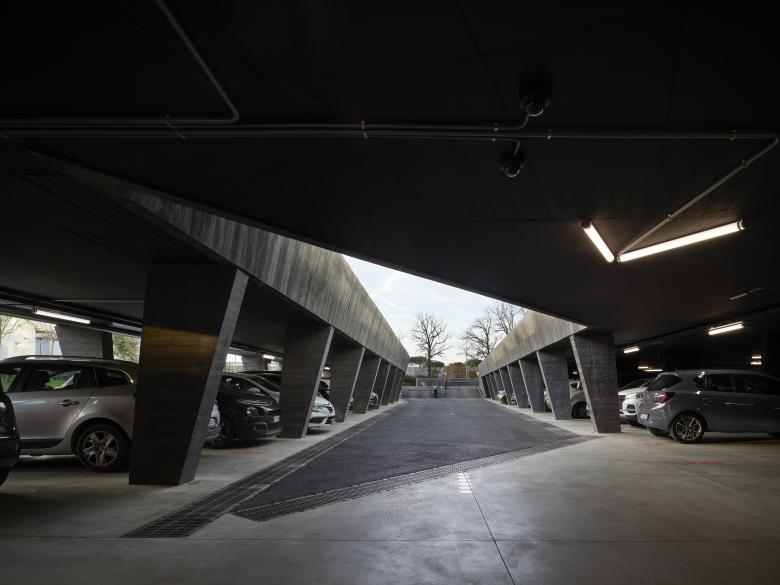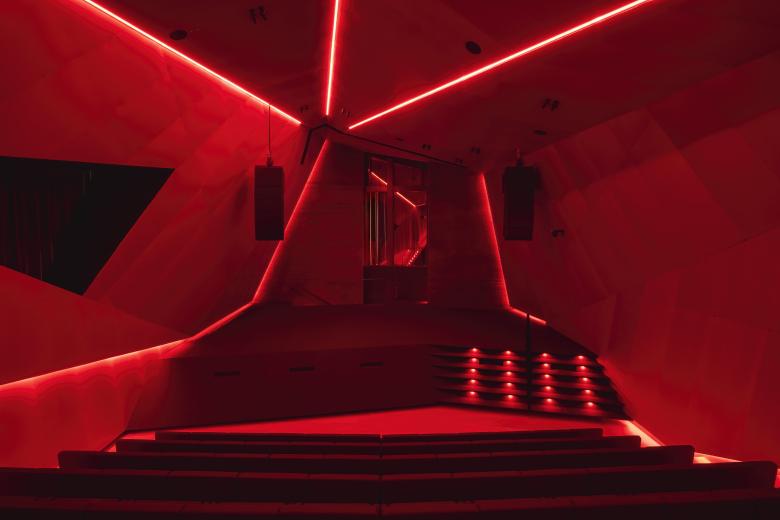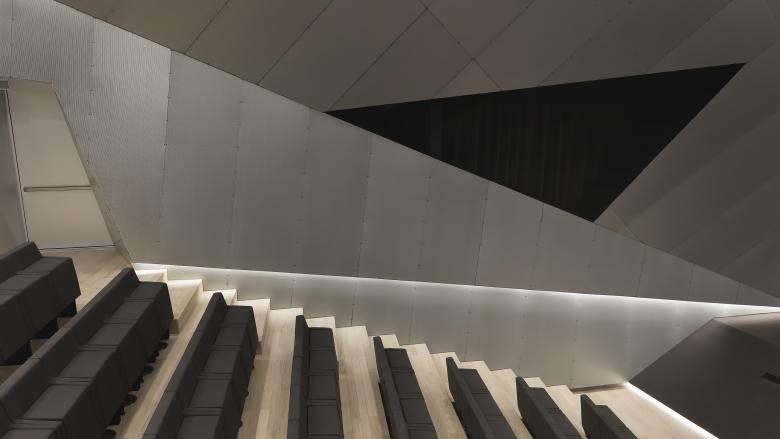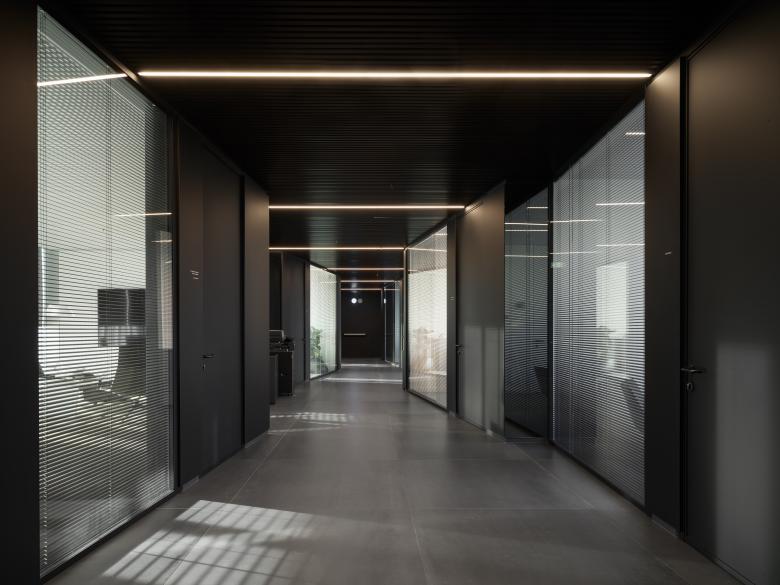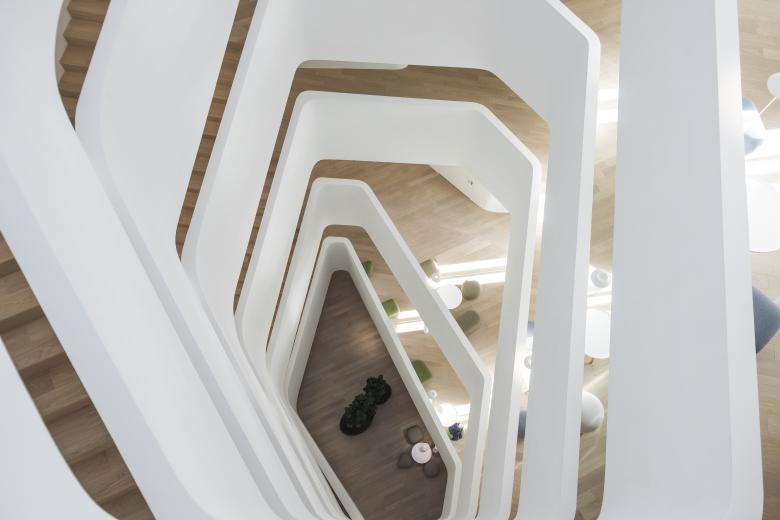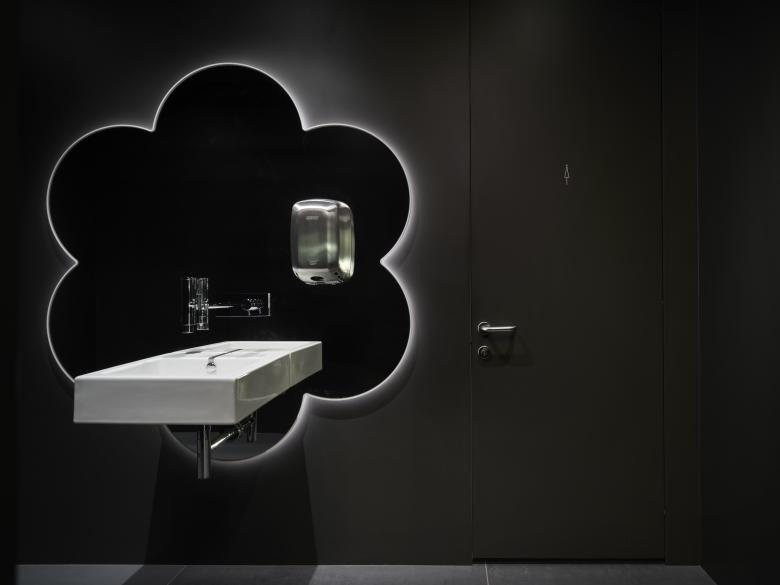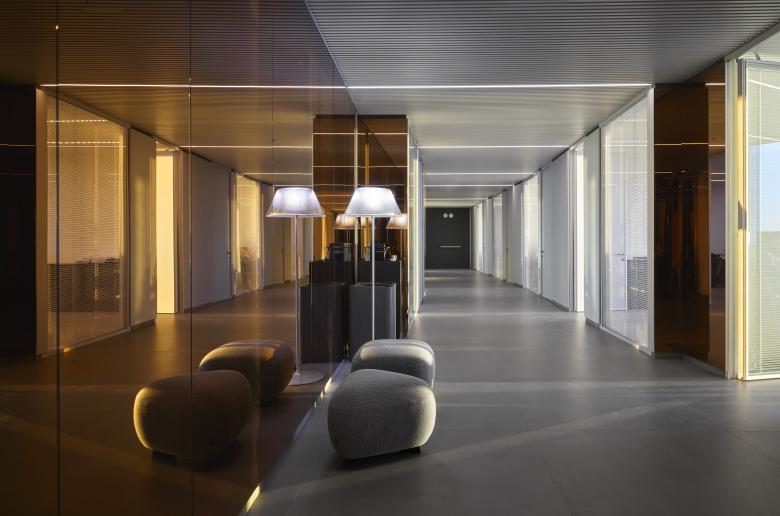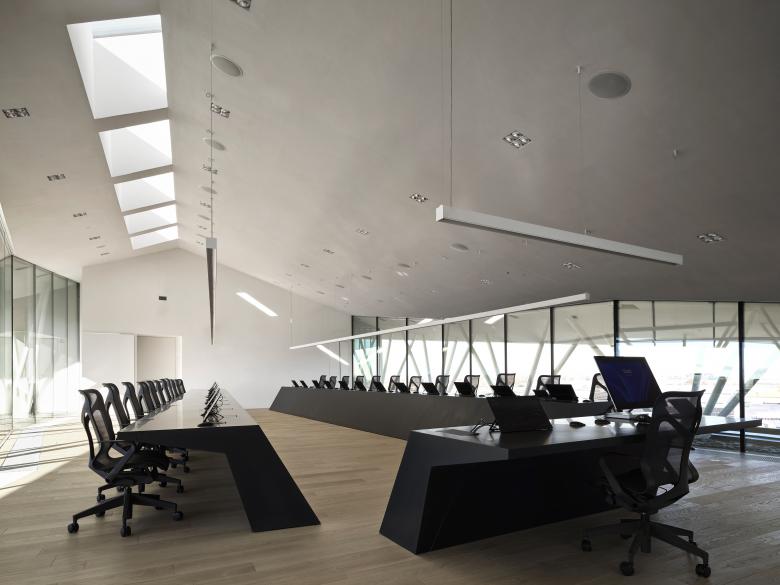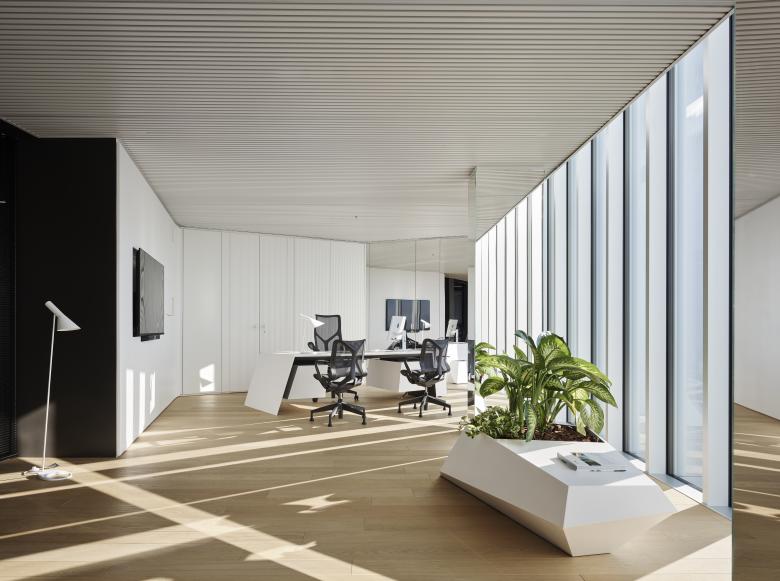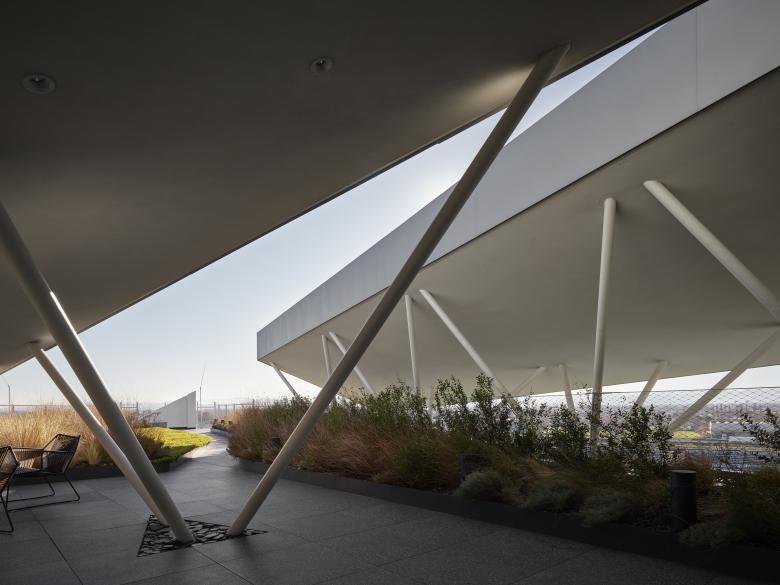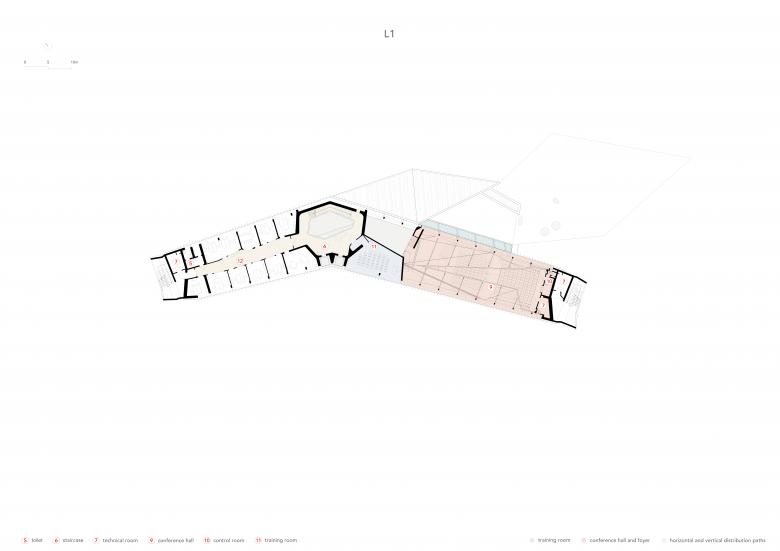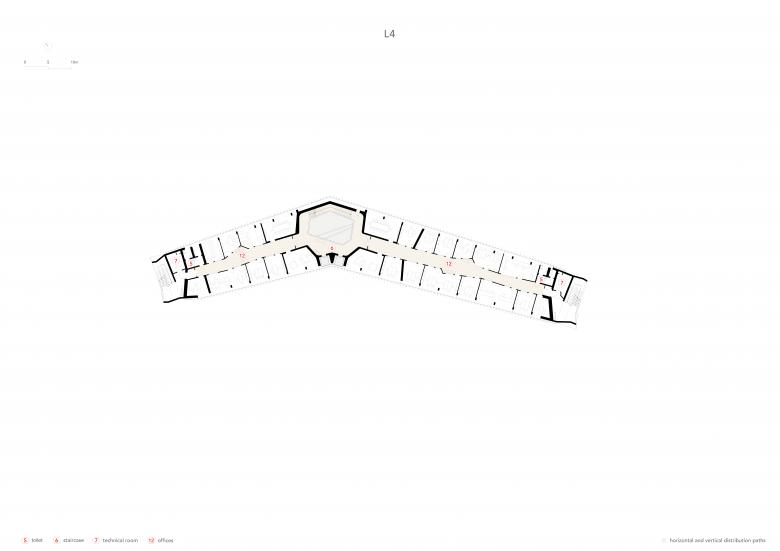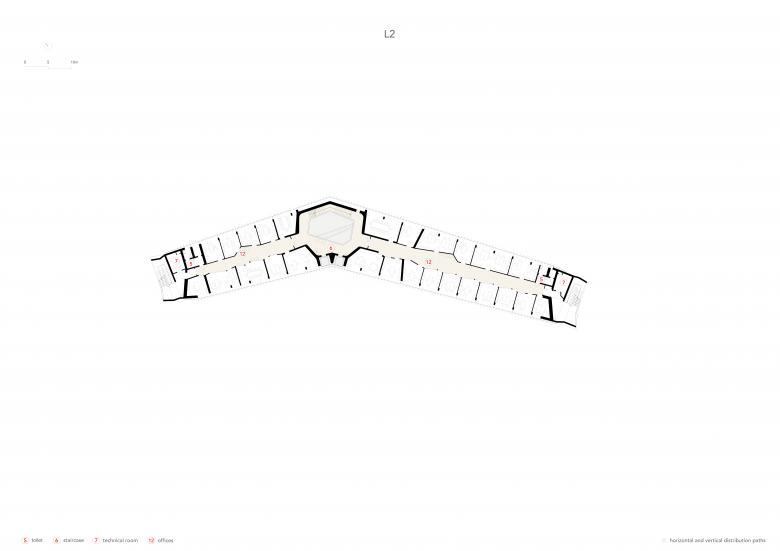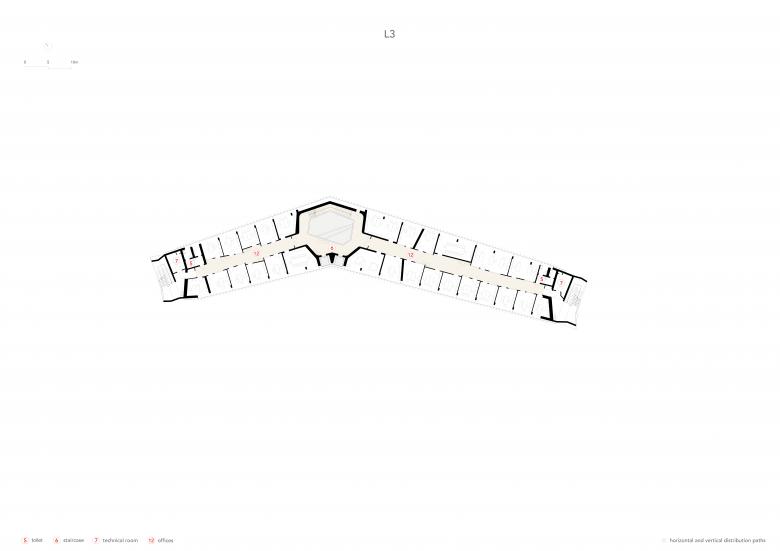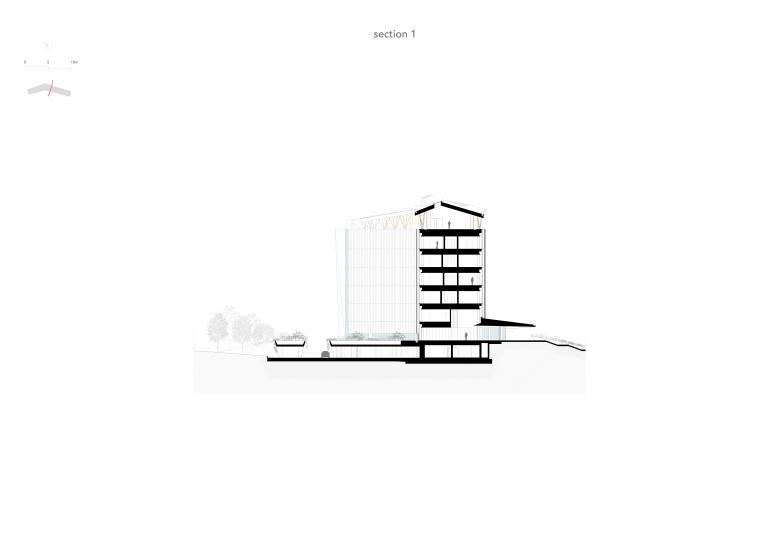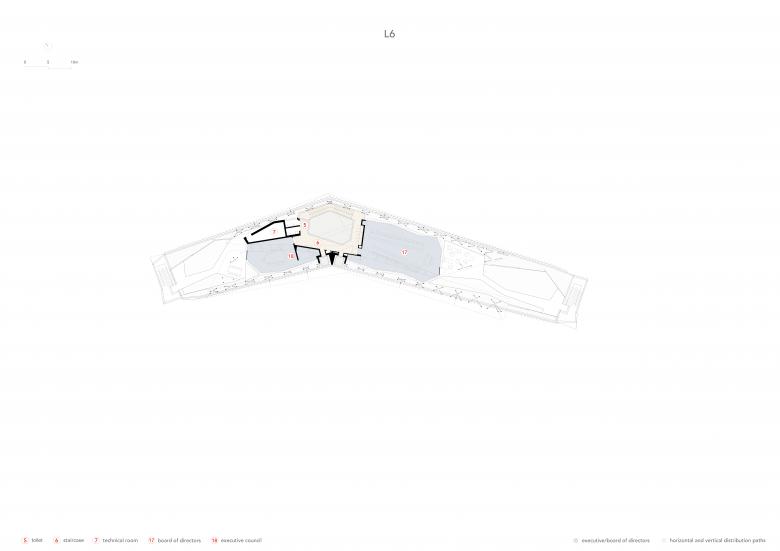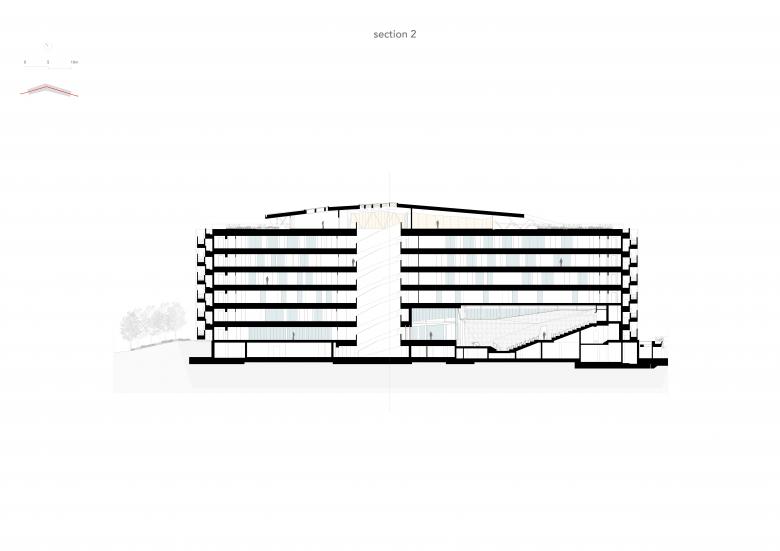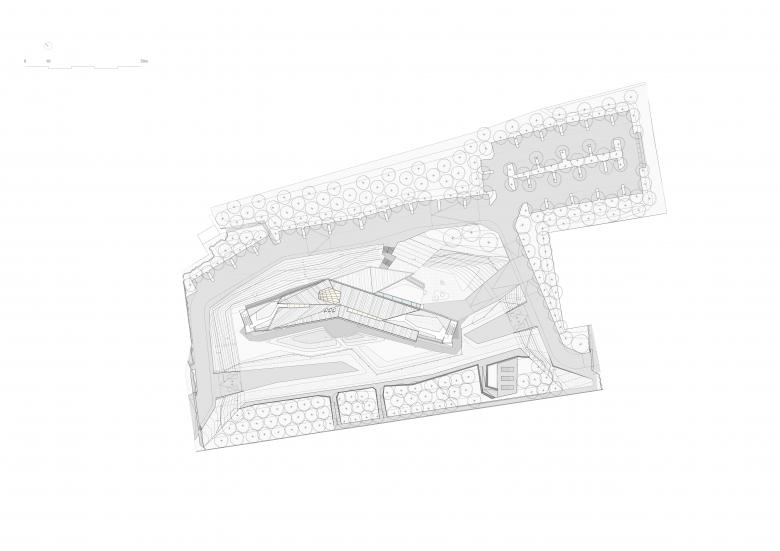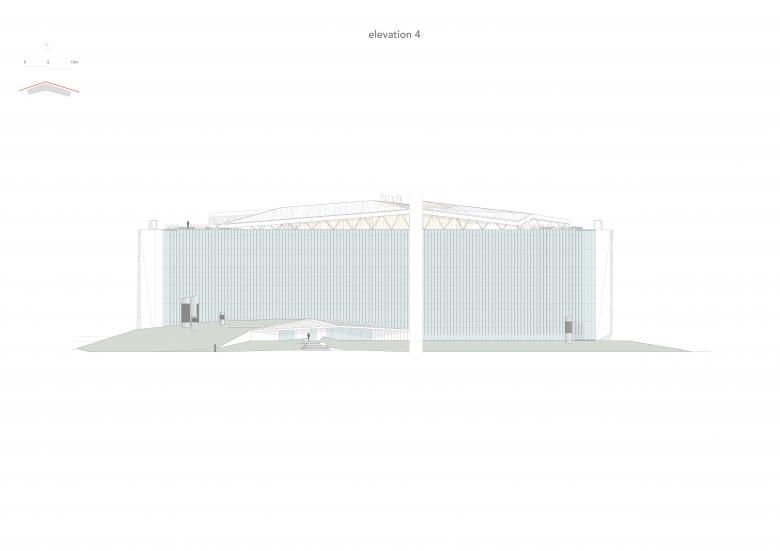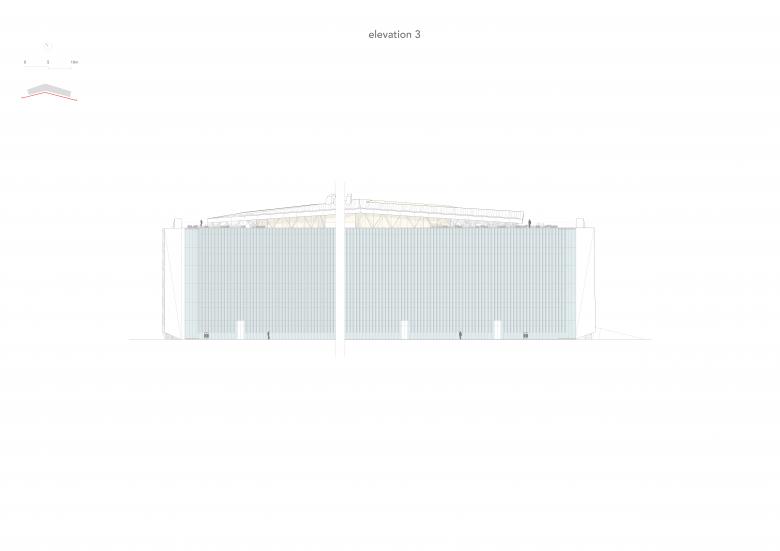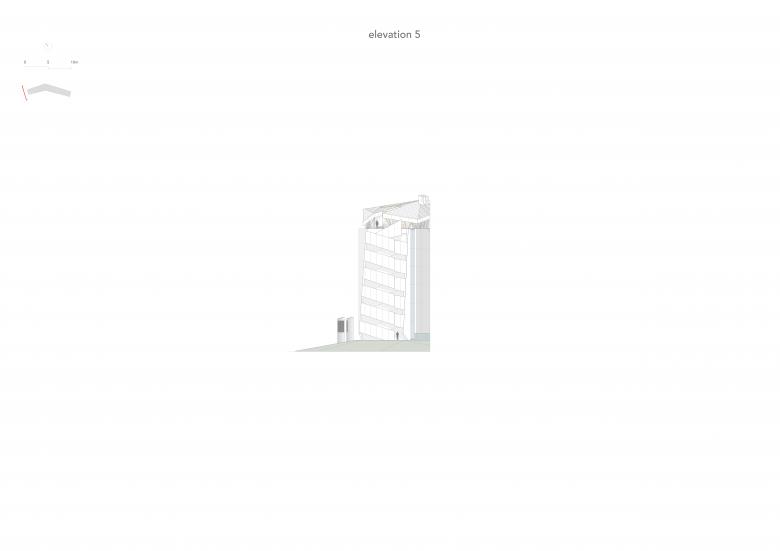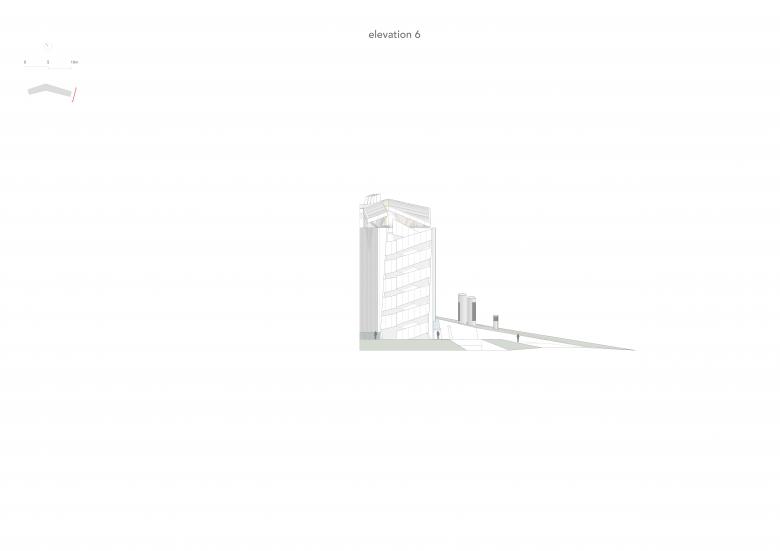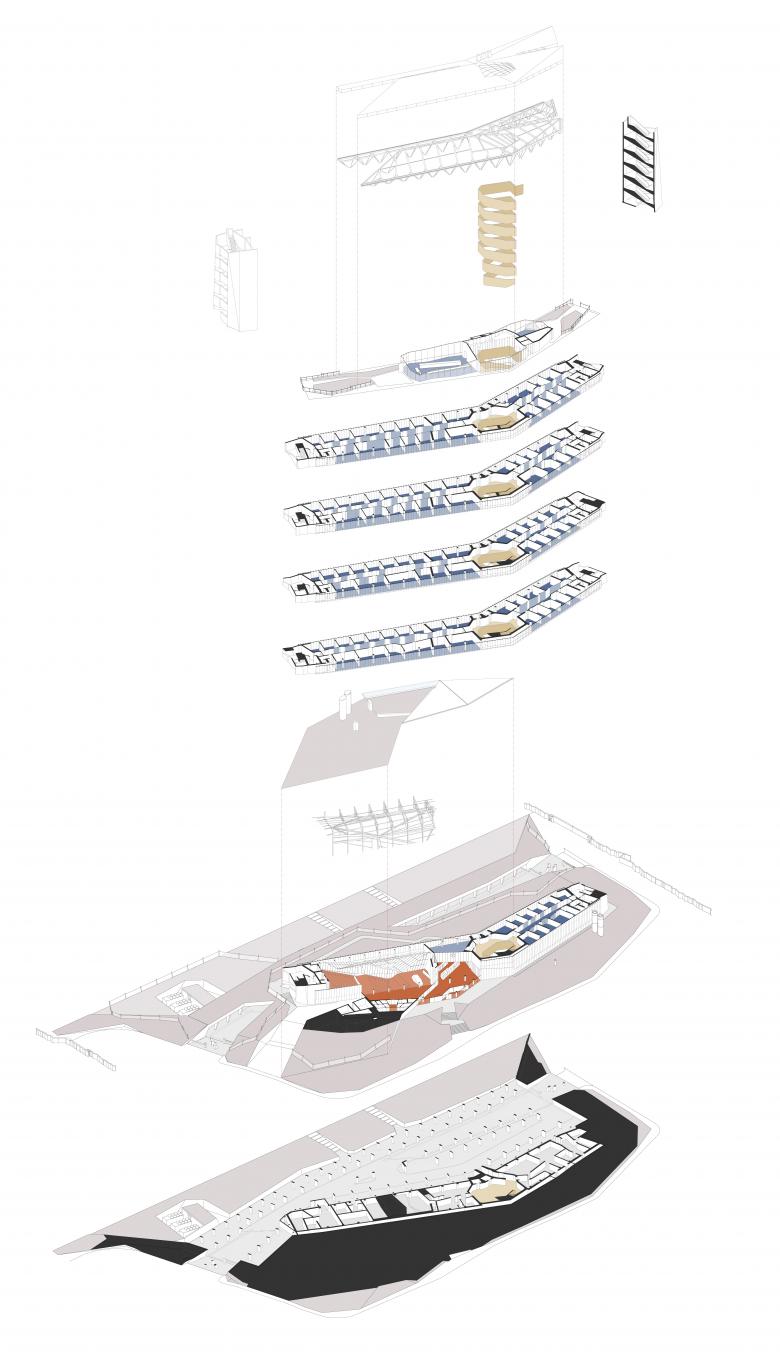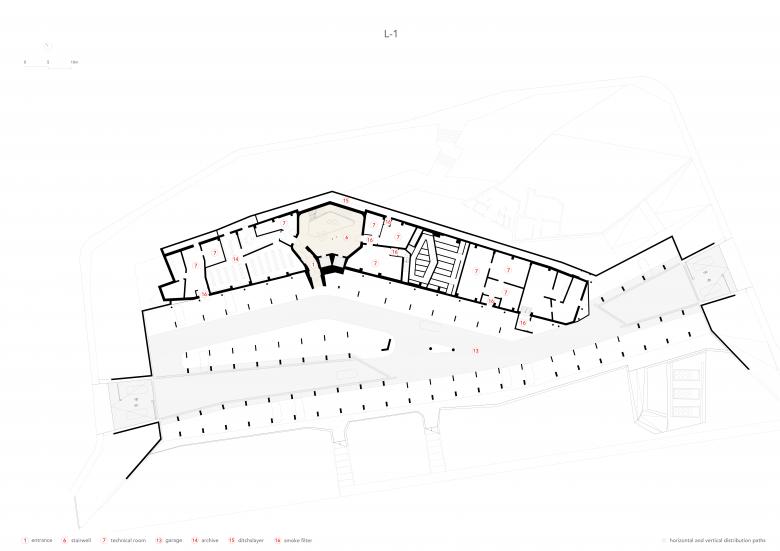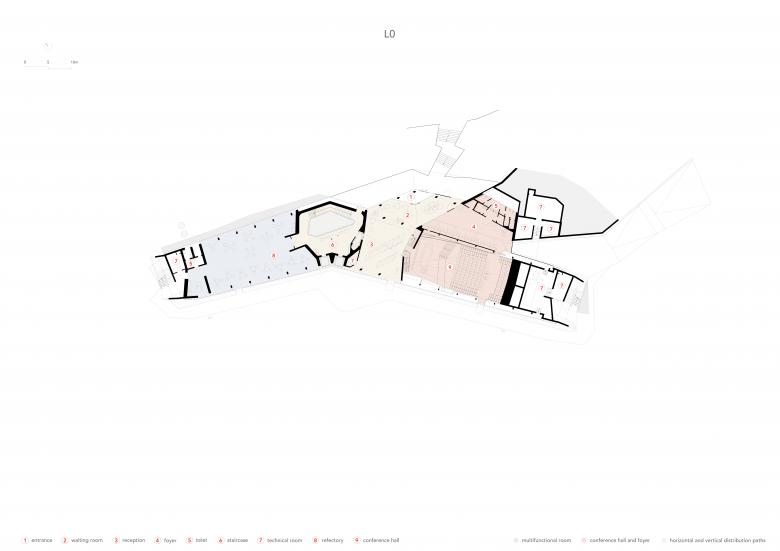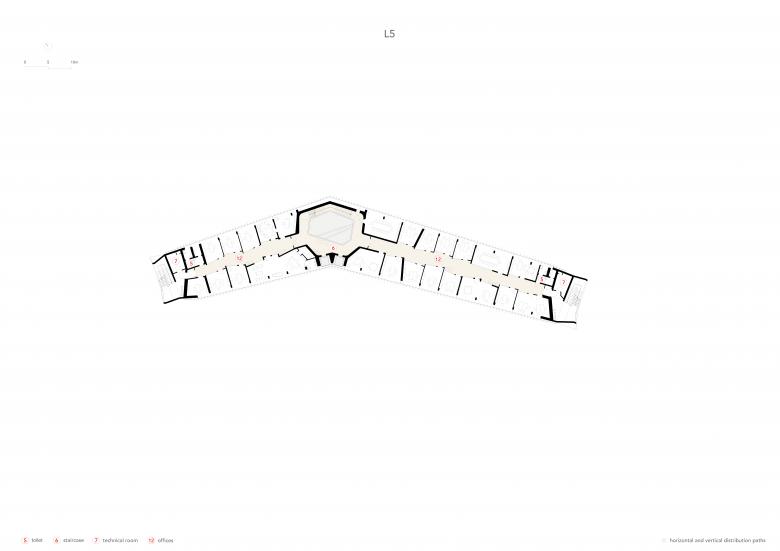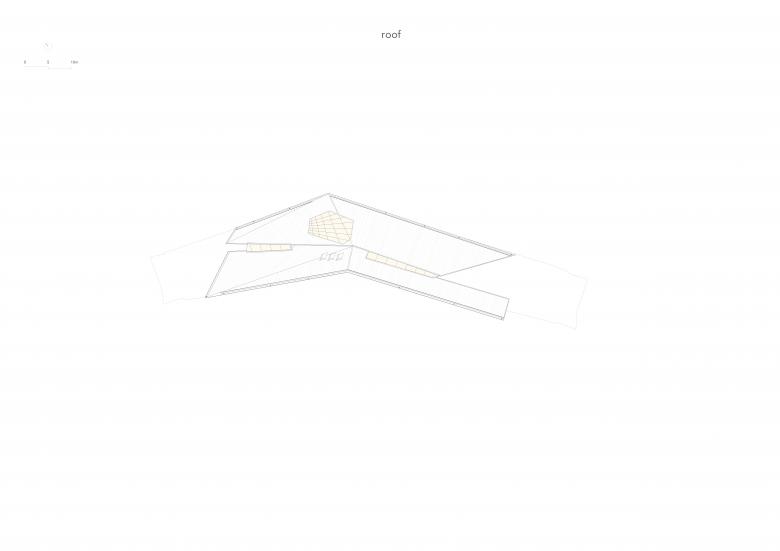Sidera
Back to Projects list- Year
- 2023
- Team
- Filippo Tisselli, Cinzia Mondello, Marcin Dworzyński
The building is situated on the outskirts of the city of Forlì, within an industrial zone that the town planning authorities have located on the edge of the ancient Roman centuriation. The site is located in close proximity to the motorway exit and just a few kilometres from the old town centre, a highly strategic point but one which is devoid of architectural language: the landscape is dominated only by a monotonous parade of prefabricated warehouses.
PLAN
Therefore, the project was to be inserted into surroundings that offered neither ideas nor constraints, other than those related to the rigid and mandatory functional brief presented by the cooperative, which can be summarised in three points:
• The building had to ensure maximum flexibility in the configuration of office spaces while avoiding an open-plan formula and guaranteeing exclusive work spaces for 1 or 2 people;
• Each of the six departments into which the company is divided had to be housed on a single level;
• The project had to include a 200-seat assembly hall and cafeteria space that could be converted into office space if required.
From the outset, therefore, a conscious decision was made to avoid focusing too heavily on structural form per se in the initial designs, but rather to let the building reveal itself by adapting its lines to the functional and logistical needs imposed. The form that can be appreciated today is the result of a creative process that paradoxically absorbs the rationality and pragmatism of the cooperative, making the headquarters itself the primary representation of the company’s scientific rigour.
EXTERNAL PROJECT
The Sidera building extends horizontally for a length of 100 metres and has a height of 33 metres, starting from a soil plinth that is approximately 3 metres high. The external surface features only three materials: aluminium (six kilometres of vertical fins), black pigmented concrete and glass (about 5000 square metres of glazing on the façade).
The natural aluminium used for the cladding sheets plays the leading role as it elegantly reflects the natural light, taking on different nuances of tone and colour at different times of the day and depending on the weather conditions. This, combined with the rapid rhythm created by the placement of the sunshade fins, creates a pleasant optical illusion as one moves around the Sidera building, whereby the building appears as either an opaque or transparent block, depending on the position from which it is viewed.
The concept of the envelope of the building does not refer only to the exterior façades, but also includes the roof, which was immediately interpreted as a kind of fifth elevation, since we are aware of the fact that with the rise of contemporary navigation tools, such as Google Earth, we are now all accustomed to looking at and perceiving spaces from above. This awareness translates into the need to also include defining architectural features for this viewpoint. The vernacular motif of the pitched roof was selected for this purpose, which, in itself, is unprecedented in such an industrial context. Six sloping pitches are scattered across the space exploiting the three large skylights as connection points, in the quest to create a dialogue with the skyline of the nearby Apennines.
INTERIOR DESIGN AND NEURO-ARCHITECTURE
The study and design of the interior space was approached as an essential component in and of itself, and thus, not viewed as a parallel project but something integral and necessary for the development of the building as a whole. Indeed, the intention was clear from the very first steps, not to entrust the representativeness of the project to the exterior envelope of the building alone, but to ensure it was the skin of a more complex organism, expressed in a continuous progression of stimuli, and we were fortified by the conviction that the intelligence and creativity of those who work and produce are nourished in their endeavours by the curiosity and complexity of the building rather than the banality of a sterile and shapeless space.
The precepts of neuro-architecture have guided most of the design choices, which focused on finding the ideal working space. Thus, external factors, such as light, air, sounds and visuals, enter the building in the form of calibrated and controlled architectural components and not merely as necessary occurrences.
The glass skin covering the Sidera building controls the inflow of natural light that floods every workspace; the light fixtures follow the 24-hour circadian rhythm; the technology employed for ventilation control and the total absence of operable windows ensure the indoor air is clean and healthy despite being in one of the most polluted areas in Europe; from every interior space and from any level it is possible to look out on the view of greenery outside.
All these factors, combined with the obsessive control of sound insulation, guarantee working conditions that foster high levels of psychological well-being, which inevitably translates into a higher quality of work from employees.
No colour has been added beyond the natural pigmentation of the materials, so much so that the photograph of the building appears desaturated: an inverted form of highlighting that emphasises the building’s rank as the company’s headquarters.
Wood, aluminium and concrete proudly express their natural state, and this ethos also applies to the many items of bespoke furniture made from Corian. The sobriety of the building in this sense reflects the seriousness and pragmatism of the company.
Between shard-like shapes and diagonal slashes, the large internal staircases act as a element of disruption for the entire layout, starting from the fact that is it the only space from which the full internal height of the Sidera building can be enjoyed in all its glory. The hypertrophic and sinuous lines play with contrast, drawing the visitor towards itself like a disruptive centripetal force. The ribbon created by the parapet of the staircase worms and winds its way upward, like a living organism whose branches are attracted by the sunlight that penetrates through the large skylight. Large landings are home to comfortable seating, which is present here as in all the circulation paths, creating small squares/meeting points that invite people to stop and interact with each other, thereby fostering a sense of community within the office. Social moments among employees are thus encouraged, strengthened by the belief that the sharing of ideas and the creation of positive relationships are fundamental factors in ensuring general well-being, which is the cornerstone of productivity.
People themselves thus become a component part of the project, the key required to activate a machine that is full of cogs and gears; and when the machine is allowed to run, it generates a stimulating narrative, full of surprises, constantly searching for reactions.
The Sidera building is a living, creative organism that denies the rigid logic of orthogonality and avoids all static constraints or obligations to monumental and banal symmetry. The entrance, the circulation spaces, the assembly hall and the top floor are all arranged in an interplay of alternating spatial compressions between the walls and ceilings and the sloping and faceted surfaces.
CONTEXT
In a context that is devoid of identity and architectural value, the Sidera building has been conceived to be a new element to add to its surroundings, like a sort of gift, a form of reparation to an area lacking in quality but one which can evidently become a better area, for the benefit of anyone who comes to make use of it (in particular, the employees of the cooperative). Even the decision to surround the headquarters with 300 trees and 22,000 plants is a response to the desire to neutralise the context in which it is built.
In the design of the headquarters, there is no formalism, nor individualism but, at its core, there is a strong sense of reality, a strong intention to interpret needs, to understand and translate into the building the transformations that mankind inevitably goes through, without ever losing sight of the centrality of relationships and of what being a human and an individual means in the present day, which keeps us increasingly distant from each other and from the environment that surrounds us.
